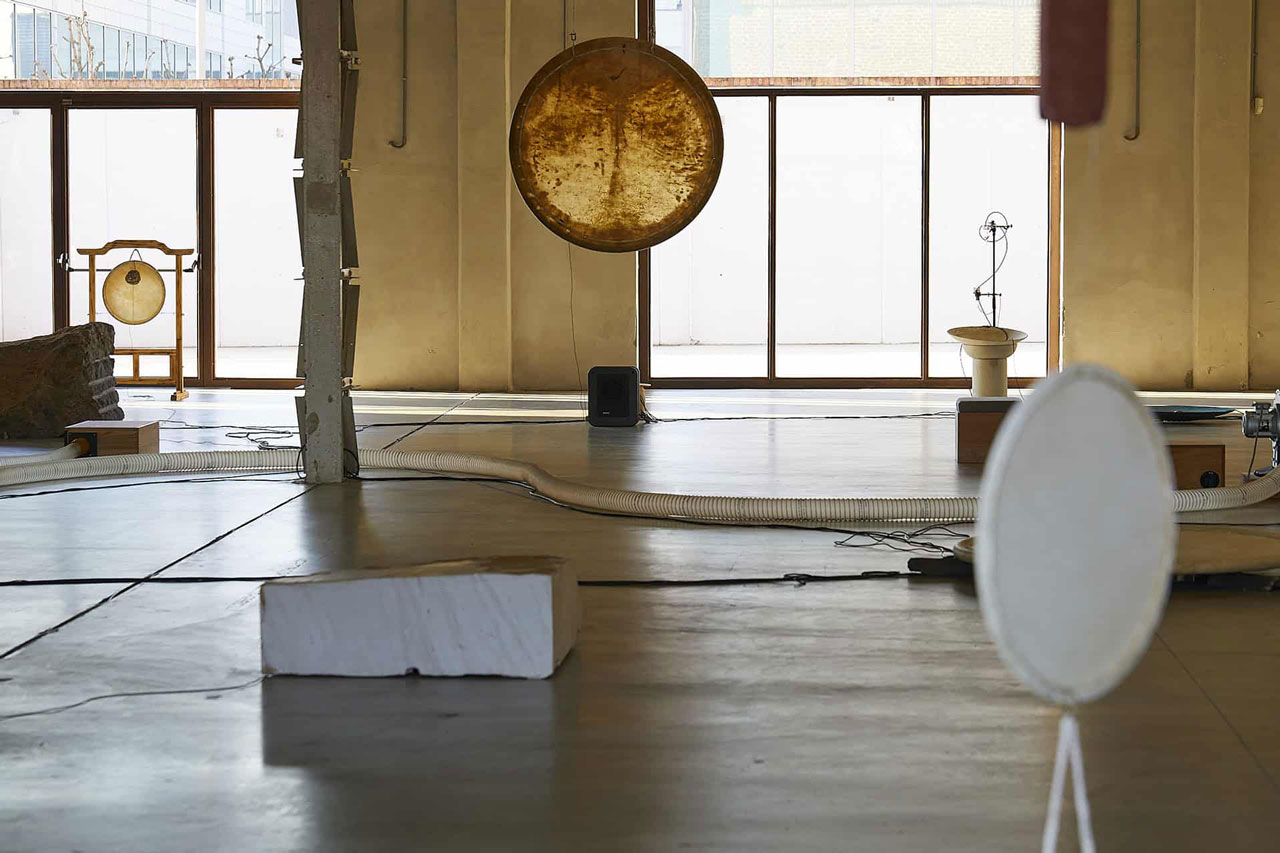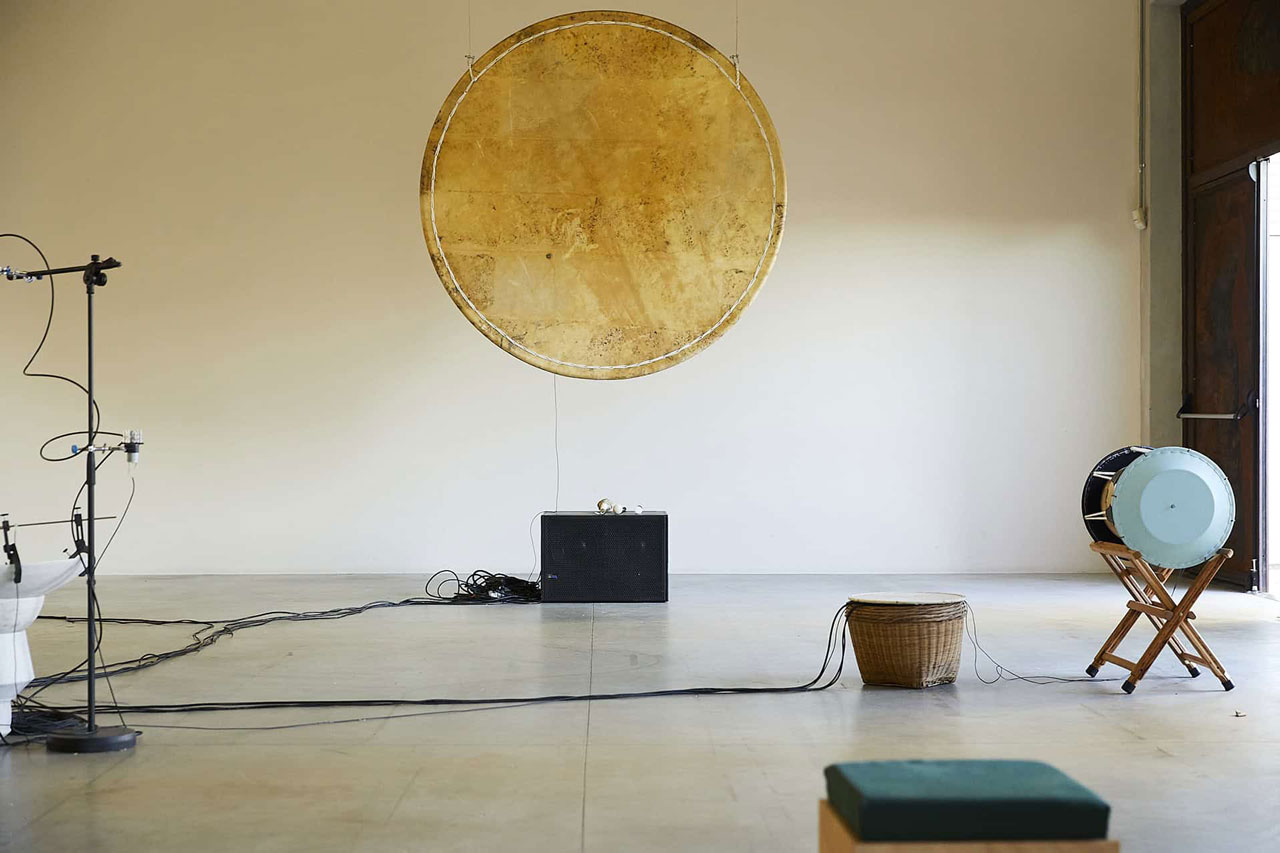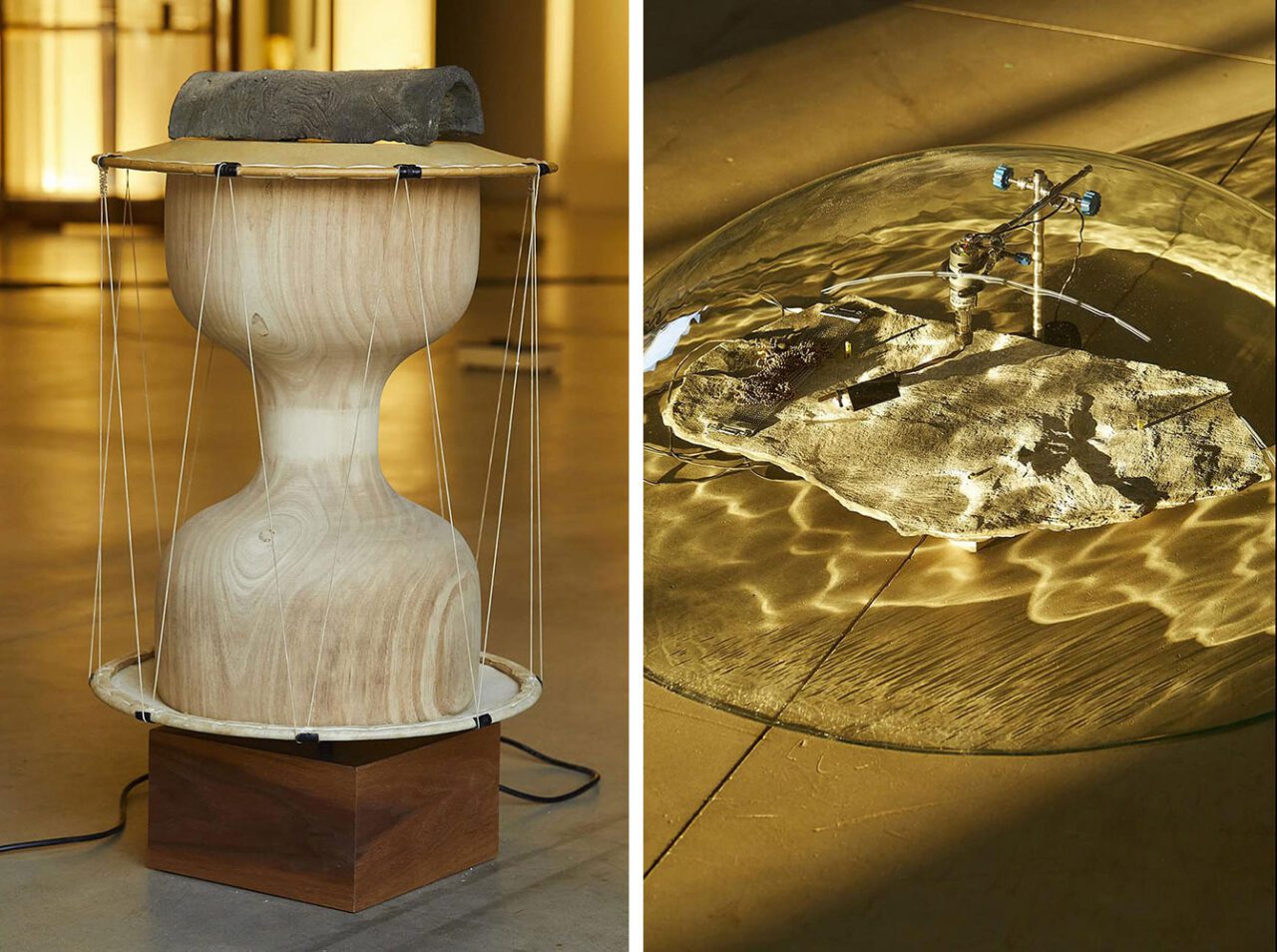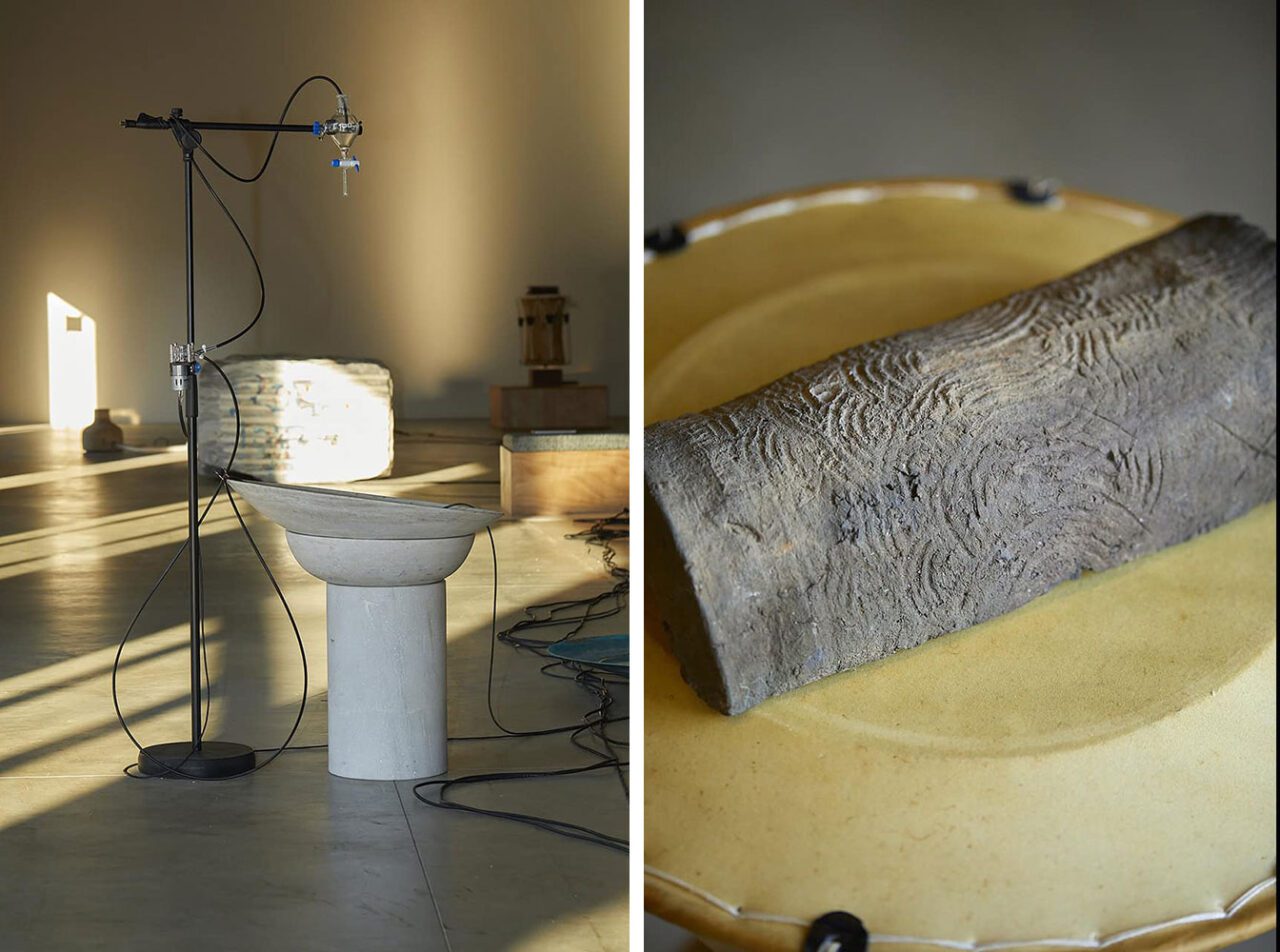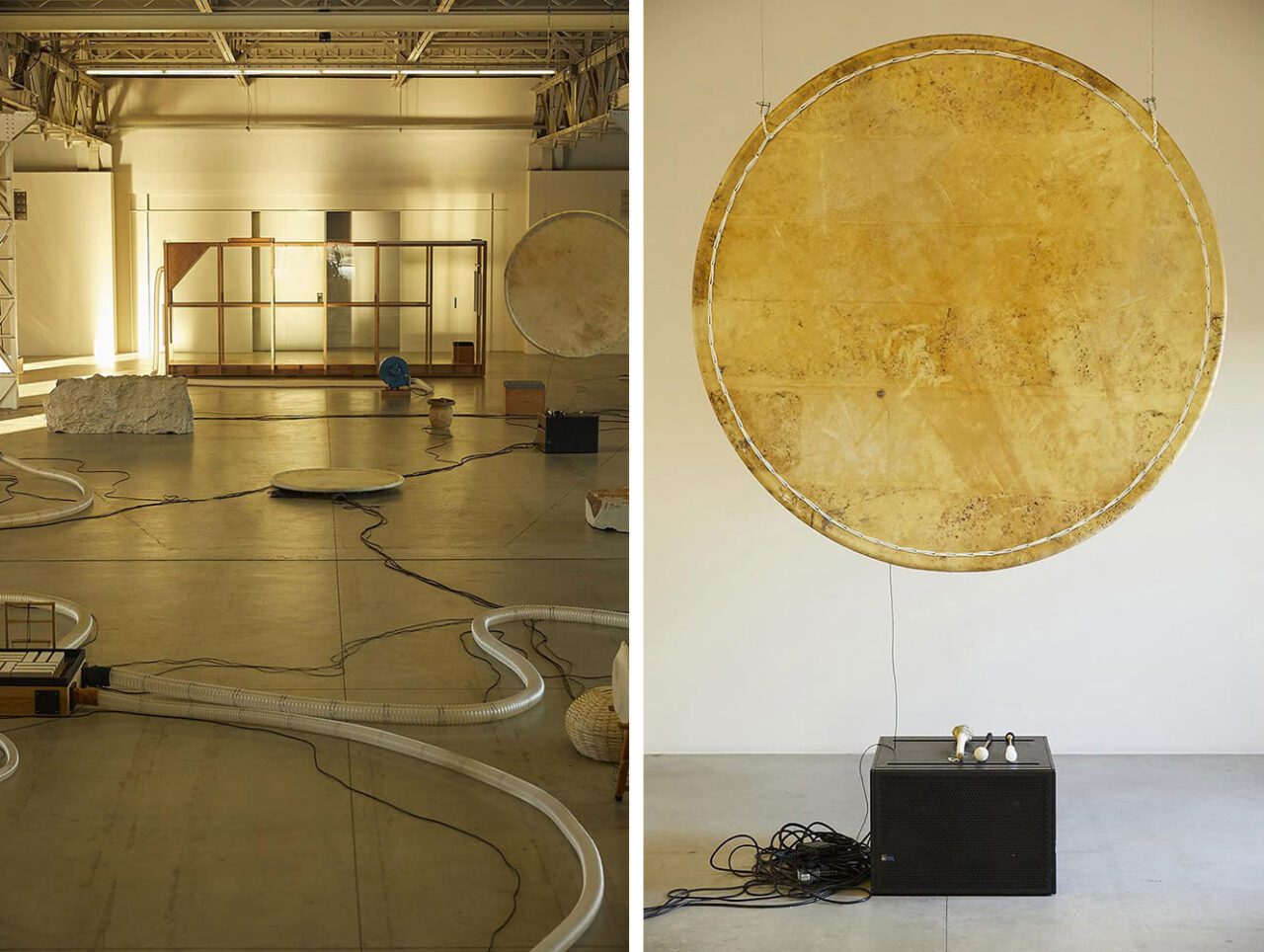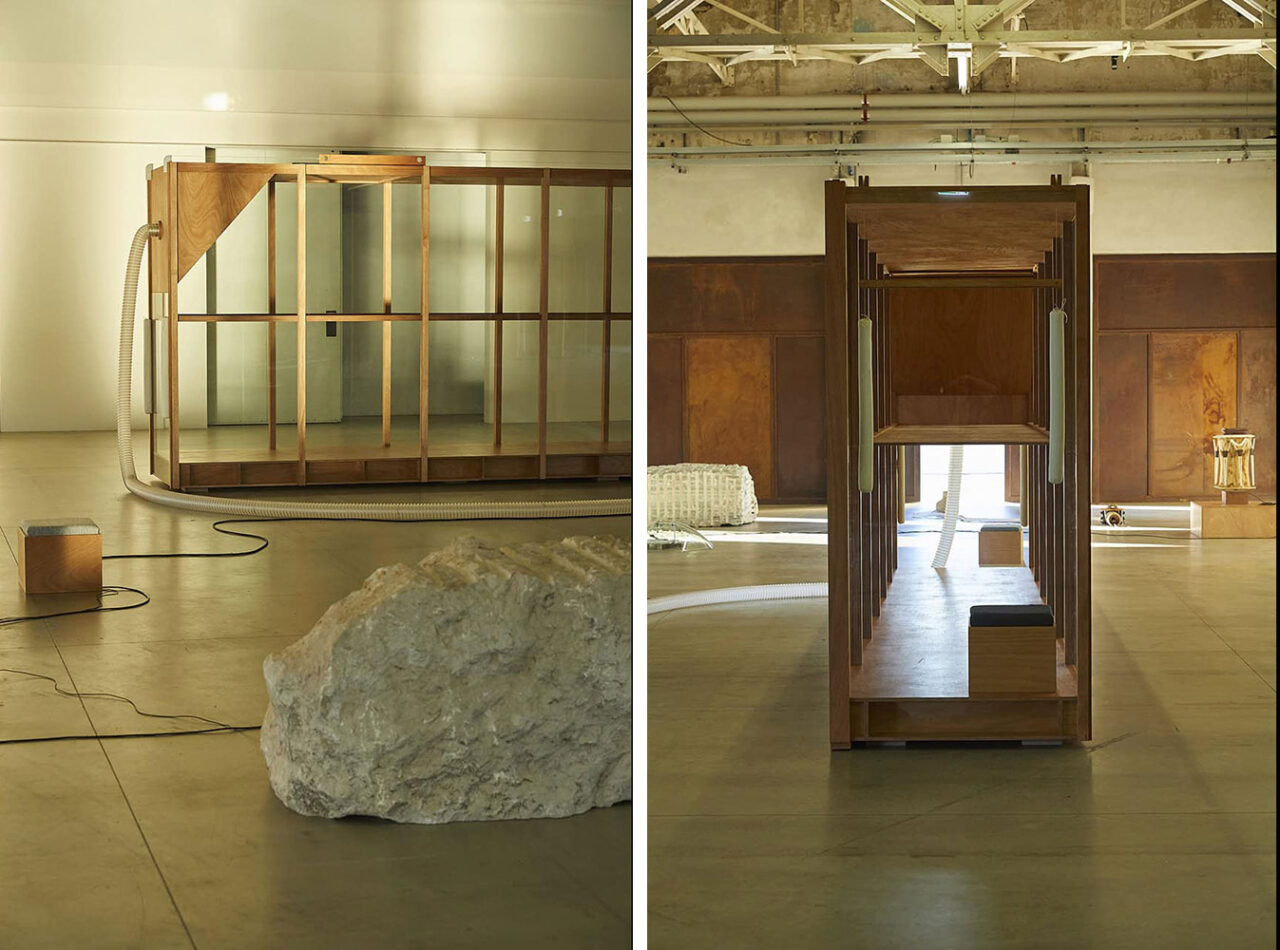PRESENTATION: Tarek Atoui-Improvisation in 10 Days
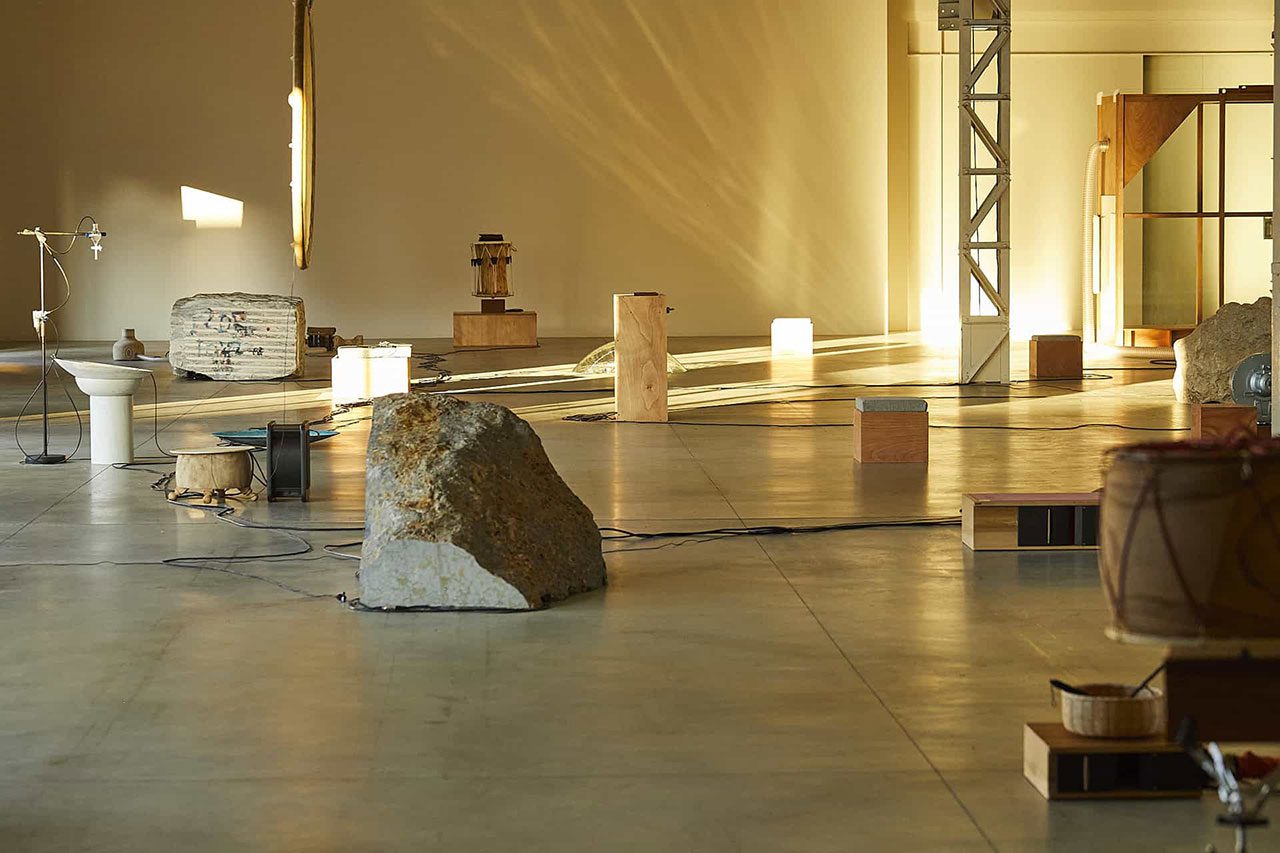 Tarek Atoui is an electro-acoustic artist and composer whose work investigates the intersection between visual and sound research and experimentation through installations, complex sonic environments, and collaborative performances. Atoui explores sound and its perception combining computers and synthesizers with organic elements such as water, air, stone, and wood, to build instruments with innovative musical and visual qualities.
Tarek Atoui is an electro-acoustic artist and composer whose work investigates the intersection between visual and sound research and experimentation through installations, complex sonic environments, and collaborative performances. Atoui explores sound and its perception combining computers and synthesizers with organic elements such as water, air, stone, and wood, to build instruments with innovative musical and visual qualities.
By Dimitris Lempesis
Photo: Pirelli HangarBicocca Archive
“Improvisation in 10 Days” is Tarek Atoui’s first solo exhibition in Italy. The exhibition reimagines three groups of works: “Souffle Conti0nu” (2022–24), “Waters’ Witness” (2020–23), and “The Rain” (2023–24)— and their readaptation, conceived by the artist over 10 days, in the Shed at Pirelli HangarBicocca. The artist conceives the exhibition as an open structure: “I like the idea of realizing the potentiality of a space by not erecting walls. In many of my works, the spaces are totally open, connecting with the outside as much as possible”. The spatial dimension is constantly changing—natural light marks the passing of the day and the elements of the works blend with the sounds, reverberating in the bodies and things. The evolution of the exhibition goes beyond the temporal indication of its title, and its true potential lies in its constant transformation and ability to initiate dynamic relationships between space, works, and people. The “Souffle Continu” group of works comprises objects that use the passage of air to produce sound and vibration. In the artist’s vision, it is intended as «a set of possibilities and a potential sound generator that can produce a multitude of music pieces, collective situations, and interpretations.» Atoui commenced his research on this type of work in 2013, in dialogue with deaf students, resulting in the development of an initial body of works entitled “WITHIN”. The intention was to introduce the audience to a sonic experience based not so much on auditory perception, but rather on a physical, visual, and gestural one. Each object is the result of collaborations with musicians and artisans, while its “playability” has been explored through various workshops with educators and students.” Organ Within” emerged from a collaboration with Léo Maurel and Vincent Martial and their research on pipe organs in church es, modular synthesizers, and the perception of tones by deaf people. Air, channeled in pipes spread out like tentacles on the ground, produces amplified vibrations that generate low frequencies, perceptible not only to the ear but also as physical sensations in the listener’s body. Here, “Organ Within” is presented together with “Reedboxes, small instruments shaped like wooden boxes assembled using materials with different acoustic properties that produce melodies. “Wind House #1 and #2” are sound rooms that visitors are invited to enter. Wind House #1 was inspired by “SubBass Prototone”, an experimental 200 x 200 x 200 cm organ pipe (whose measurements Atoui replicated) built by instrumentalist Johannes Goebel in the 1980s. “Wind House #2” has a more elongated shape that creates a different reverberation of sound in space. In both works, the device that emits the sound consists of a side opening that slides vertically, allowing different tones to be obtained depending on the amount of wind injected into the room by a compressor. The vibration of the sound- waves is propagated through the surfaces of the chambers and transmitted to the visitor’s body, who becomes part of this imposing musical instrument. “The Rain” explores multiple ways of producing sound using the four elements: water, air, earth, and fire. Atoui started this project during a research trip to South Korea that culminated in the presentation of the work at the 14th Gwangju Biennale in 2023. “This piece was an homage to these four elements, where the idea was to have them laying on the ground. Here, they play a fundamental role, they are the performers, and they are I would say at the forefront of bringing this piece to life and making it come together”. The project also stems from an in-depth study of the techniques involved when crafting musical instruments, made from ceramic, porcelain, and traditional Korean hanji paper, also chosen for their sound transmission properties. Working with local crafts- men and scholars of traditional culture, Atoui selected and assembled these materials, paying particular attention to their provenance and significance. Some ceramic components, for example, feature decorative imprints made by pressing fresh clay onto a large bell decorated with relief motifs, a gesture that transforms the memory of a musical object into another instrument. The interplay among the elements explored in “The Rain” can be seen in different works that play in original ways. For example in “The Water Bubble System”, the bubbling water produces an unusual timbre resulting from the interaction between water and air. In “The Big Drum”, the air flowing inside the instrument makes the membrane vibrate, generating the sound, while in “The Center Drum”, heating systems alter the tension of the drum skin, expanding its size and modifying its tones. «When it comes to earth and to tellurian forces, for me it’s about vibration, it’s about elements vibrating, shaking: with sound being the vibration itself, it is this material, very grounded feeling that you get in this space when sound becomes physical.» Through sounds that materialize and become physically perceptible, Atoui creates an experience that brings the listener closer to the natural elements. “Waters’ Witness” is a sound research project focusing on the theme of water. The installation consists of sculptural and sonic elements using different materials such as marble, metal, and ceramics. The work is based on the study and sound recording carried out by Tarek Atoui with Eric La Casa and Chris Watson, with the aim of documenting the human, ecological, historical, and industrial contexts of some coastal cities, such as Athens, Abu Dhabi, Beirut, Istanbul, Porto, Singapore, and Sydney, whose economic and social life is closely linked to their ports: «I have always been interested in capturing the sound of water. This exploration pushed me to start listening to bodies of water and to the intuition that by listening to a harbor and what surrounds it, you could understand the place.» Working close to the water or directly underwater, Atoui uses various recording techniques applied to materials such as met- al, stone, and wood to capture the sounds of the sea and port activities. These tracks come together in the installation entitled “Waters’ Witness”, where they are combined with the noise of dripping water, used by the artist as a sonic element inside the sculptures. The concept of stratification is central to Atoui’s work and manifests in multiple aspects. For example, the use of marble blocks is not only related to their acoustic and reverberative properties, but also to their symbolic value as a material associated with the origins of classical Western art. With this installation, the artist composes a soundscape that unites different geographical and symbolic worlds, creating a space and time for new encounters, exchanges, and connections.
Photo: Tarek Atoui ,Improvisation in 10 Days, Exhibition view Pirelli HangarBicocca-Milan, 2025, Photo: Rasa Juskeviciute, Courtesy the artist and Pirelli HangarBicocca
Info: Curator: Lucia Aspesi, Pirelli HangarBicocca, Via Chiese, 2, Milan, Italy, Duration: 6/2-20/7/2025, Days & Hours: Thu-Sun 10:30-20:30, https://pirellihangarbicocca.org/
